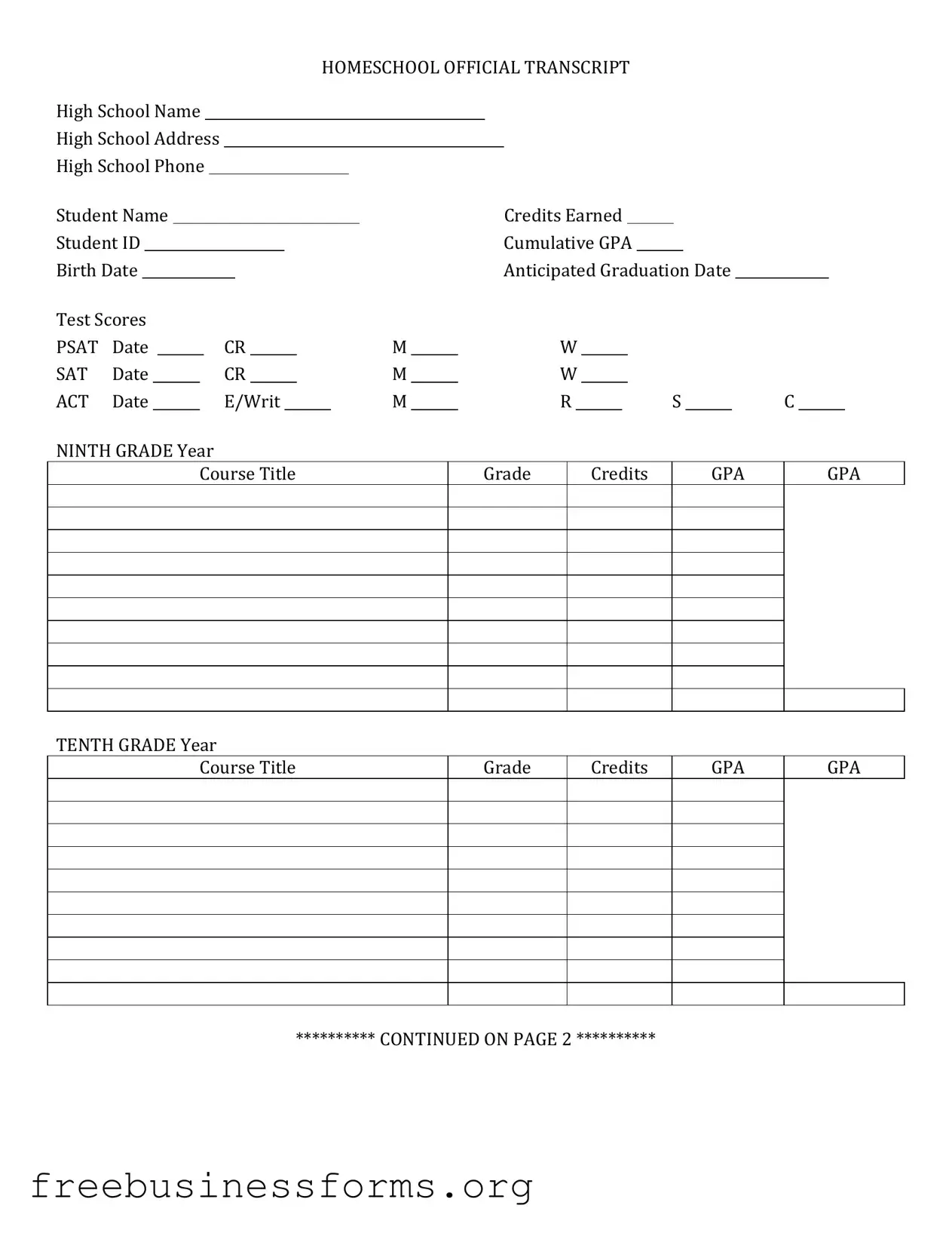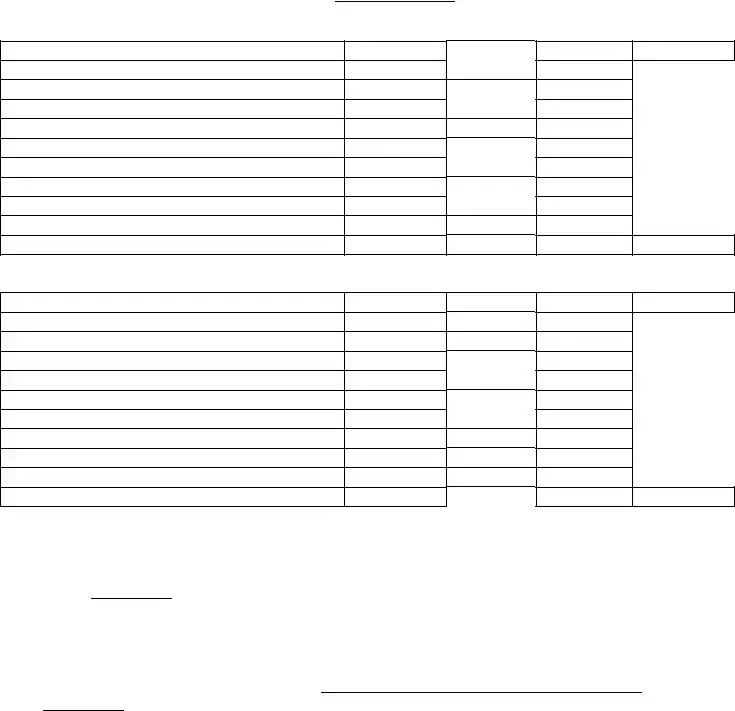When navigating the world of education, particularly during the transition from high school to college or the workforce, the High School Transcript form plays a crucial role. This document serves as an official record of a student's academic achievements, showcasing courses taken, grades earned, and overall performance throughout their high school years. Typically, it includes vital information such as the student's name, date of birth, and graduation date, along with the school's name and address. The transcript not only reflects academic accomplishments but may also highlight extracurricular activities and honors received, providing a comprehensive view of a student's high school experience. Understanding the components of this form is essential for students and parents alike, as it can significantly impact college admissions and job opportunities. Properly completing and submitting the High School Transcript form ensures that potential schools or employers have an accurate and complete picture of a student's qualifications and readiness for the next steps in their journey.


